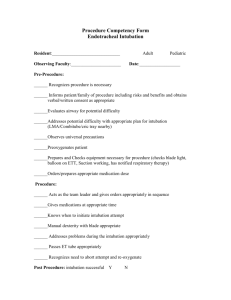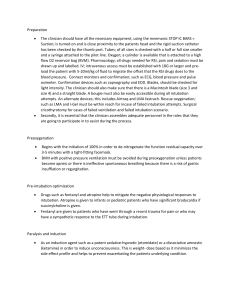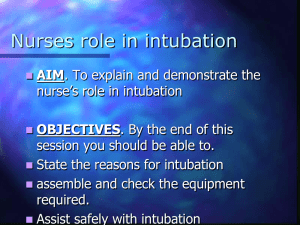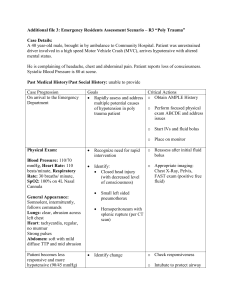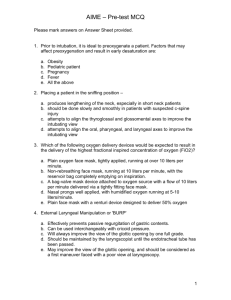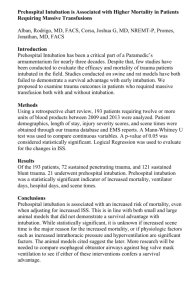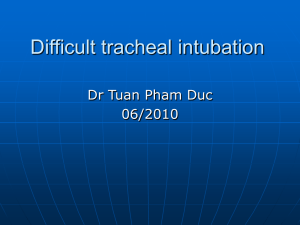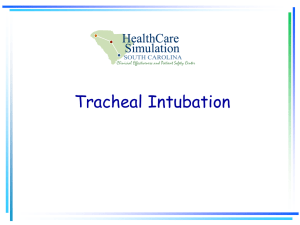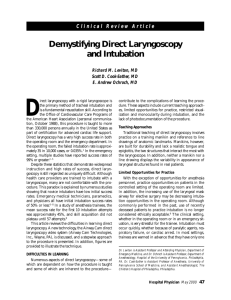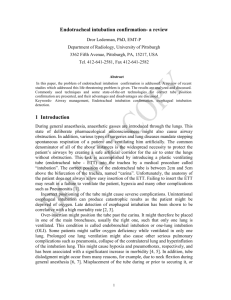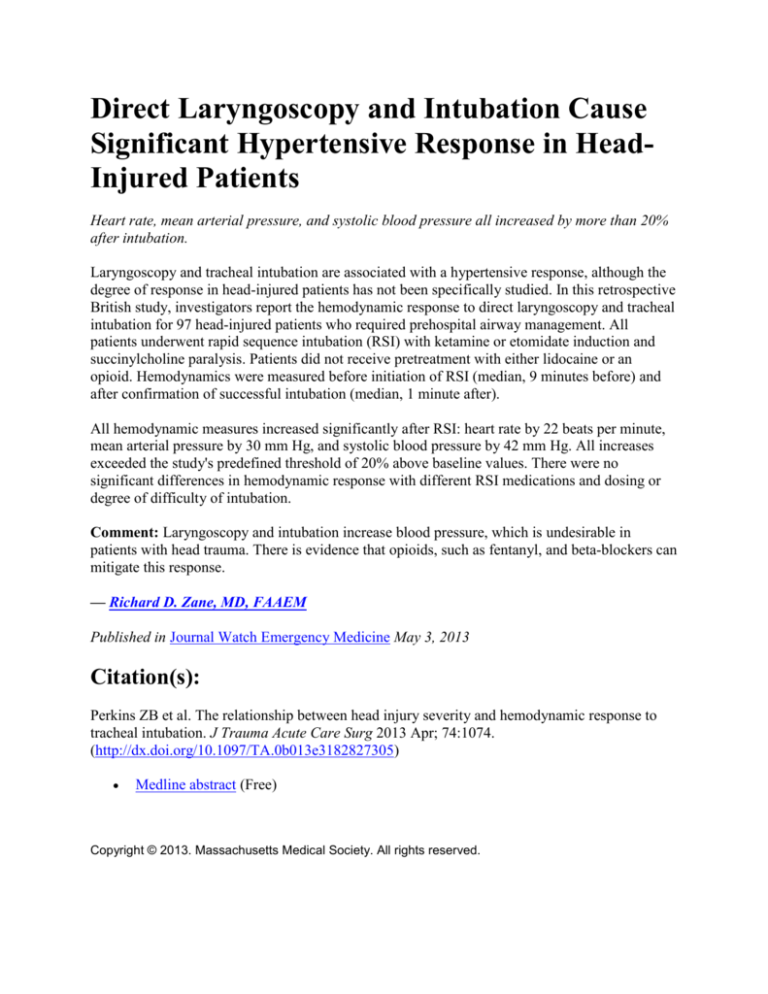
Direct Laryngoscopy and Intubation Cause
Significant Hypertensive Response in HeadInjured Patients
Heart rate, mean arterial pressure, and systolic blood pressure all increased by more than 20%
after intubation.
Laryngoscopy and tracheal intubation are associated with a hypertensive response, although the
degree of response in head-injured patients has not been specifically studied. In this retrospective
British study, investigators report the hemodynamic response to direct laryngoscopy and tracheal
intubation for 97 head-injured patients who required prehospital airway management. All
patients underwent rapid sequence intubation (RSI) with ketamine or etomidate induction and
succinylcholine paralysis. Patients did not receive pretreatment with either lidocaine or an
opioid. Hemodynamics were measured before initiation of RSI (median, 9 minutes before) and
after confirmation of successful intubation (median, 1 minute after).
All hemodynamic measures increased significantly after RSI: heart rate by 22 beats per minute,
mean arterial pressure by 30 mm Hg, and systolic blood pressure by 42 mm Hg. All increases
exceeded the study's predefined threshold of 20% above baseline values. There were no
significant differences in hemodynamic response with different RSI medications and dosing or
degree of difficulty of intubation.
Comment: Laryngoscopy and intubation increase blood pressure, which is undesirable in
patients with head trauma. There is evidence that opioids, such as fentanyl, and beta-blockers can
mitigate this response.
— Richard D. Zane, MD, FAAEM
Published in Journal Watch Emergency Medicine May 3, 2013
Citation(s):
Perkins ZB et al. The relationship between head injury severity and hemodynamic response to
tracheal intubation. J Trauma Acute Care Surg 2013 Apr; 74:1074.
(http://dx.doi.org/10.1097/TA.0b013e3182827305)
Medline abstract (Free)
Copyright © 2013. Massachusetts Medical Society. All rights reserved.

